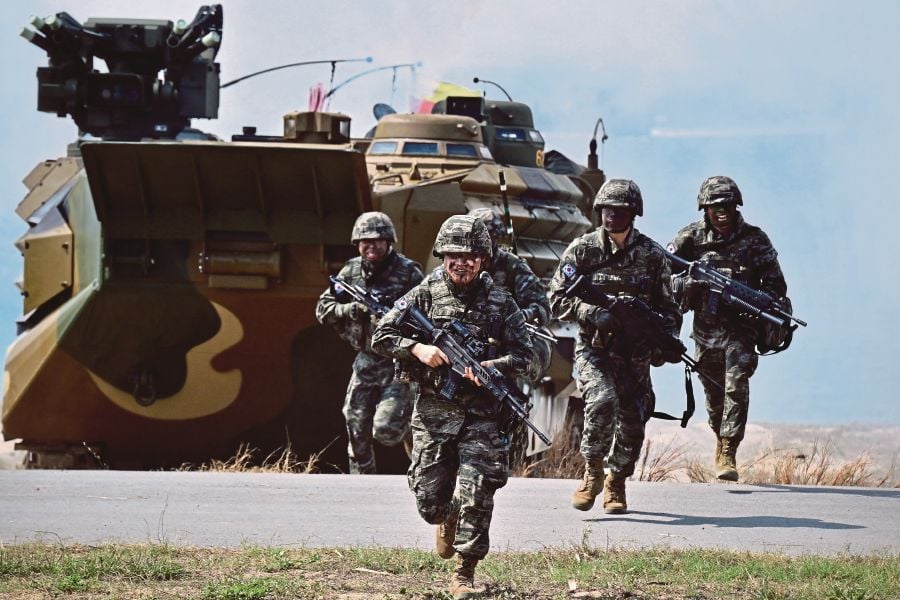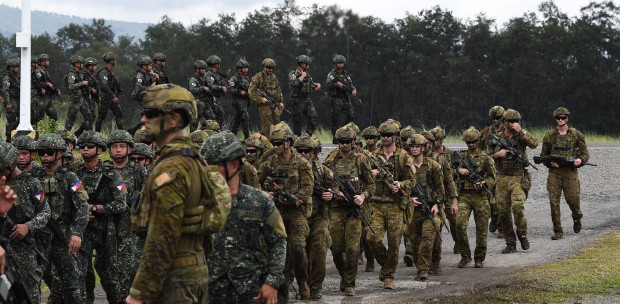AS the North Atlantic Treaty Organisation (Nato) troops, including up to 25,000 Americans, continued their largest military exercises since the end of the Cold War in Europe last week, one of America's most established Asian multinational drills was under way in Thailand.
"Cobra Gold" involves almost 10,000 military personnel from the United States, Thailand, Malaysia, Singapore, Indonesia, South Korea, Japan and others, and simulates a range of missions, including amphibious landings, parachute jumps, live firing of ground as well as aerial weapons, and cyber warfare.
On the surface, that might look very similar to the activities Nato members are engaged in as part of their much larger Steadfast Defender drills, which involve almost 100,000 personnel from the Arctic to the Mediterranean.
There is one big difference: while Nato allies are training to fight together if necessary in the event of an external attack on Europe — most likely from Russia — 20 of the nations at the heart of Cobra Gold have no intention of fighting alongside the US in a war with China if they can avoid it.
"The objective of the exercise of 2024 is to enhance the relations of all participating nations, to enhance the forces' capability and interoperability... and adapt to various threats and crises," said General Thitichai Tiantong, chief of joint staff for Thailand's military which hosts Cobra Gold alongside the US.
Thailand, Malaysia, Indonesia and even Singapore — which houses a US naval facility that Washington would definitely like to use in time of war — are all keen to balance their relationships with Washington and Beijing, as well as other major regional players, without being drawn into any confrontation.
Even the combat elements of the exercise are focused on keeping relationships open and functioning rather than preparing for the kind of regional conflict that could erupt if China invades Taiwan.
Up to 2022, the last year for which full figures are available, the US remained the largest investor in capital projects in Southeast Asia, spending just over US$74 billion between 2018 and 2022, according to the Financial Times' foreign direct investment markets' tracker of cross-border investments.
China invested US$68.5 billion over the same period. Most analysts expect China to outstrip the US in regional investment over the coming decade.
Starting in 1982 and now on its 43rd iteration, the US military says Cobra Gold is now the world's longest continuously running international military exercise.
The vast majority of personnel — 6,000 — will be American, with 3,000 from Thailand. More than 30 other countries — including Australia, Britain, Bangladesh, Brunei, Canada, Mongolia, France, Nepal, New Zealand, the Philippines and Vietnam — will participate, with some attending workshops on operational planning and others simply sending observers.
Below the surface, however, the very real international competition in the region is rarely far away.
Most of the major drills in Asia partner the US with one or more countries in the region.
Drills with America's closest Asian allies — Australia, Japan, South Korea and increasingly the Philippines — tend to be those focusing on the kind of maritime, air, drone, missile, space and cyber battles those nations believe they need to be prepared for should war come with China or North Korea.
Last year's biennial US-Australian-led Talisman Sabre two-week exercise involved more than 34,000 military personnel across five states and territories of Australia.
It was almost immediately followed by the smaller Super Garuda Shield with Indonesia — another country seen hedging its bets between the US and China — which involved 10,000 personnel primarily in disaster relief operations.
Ironically, one of the most critical US military relationships in the region — that with Taiwan — has some of the least joint training.
US officials told US media outlets that just over 100 US personnel are now based on the island providing joint training to Taiwanese troops.
This month has also seen the third set of joint US-Filipino naval exercises in the South China Sea since November, a clear response to mounting tensions between China and the Philippines over the disputed Second Thomas Shoal.
* The writer is a Reuters columnist writing on defence and security issues






